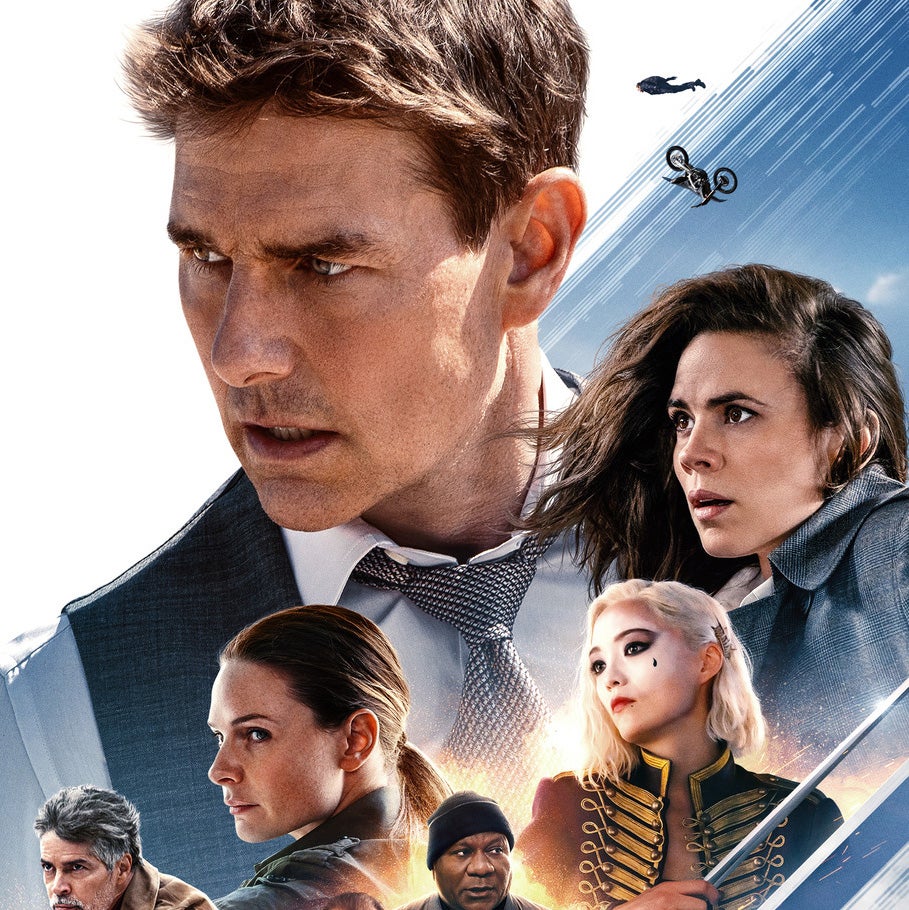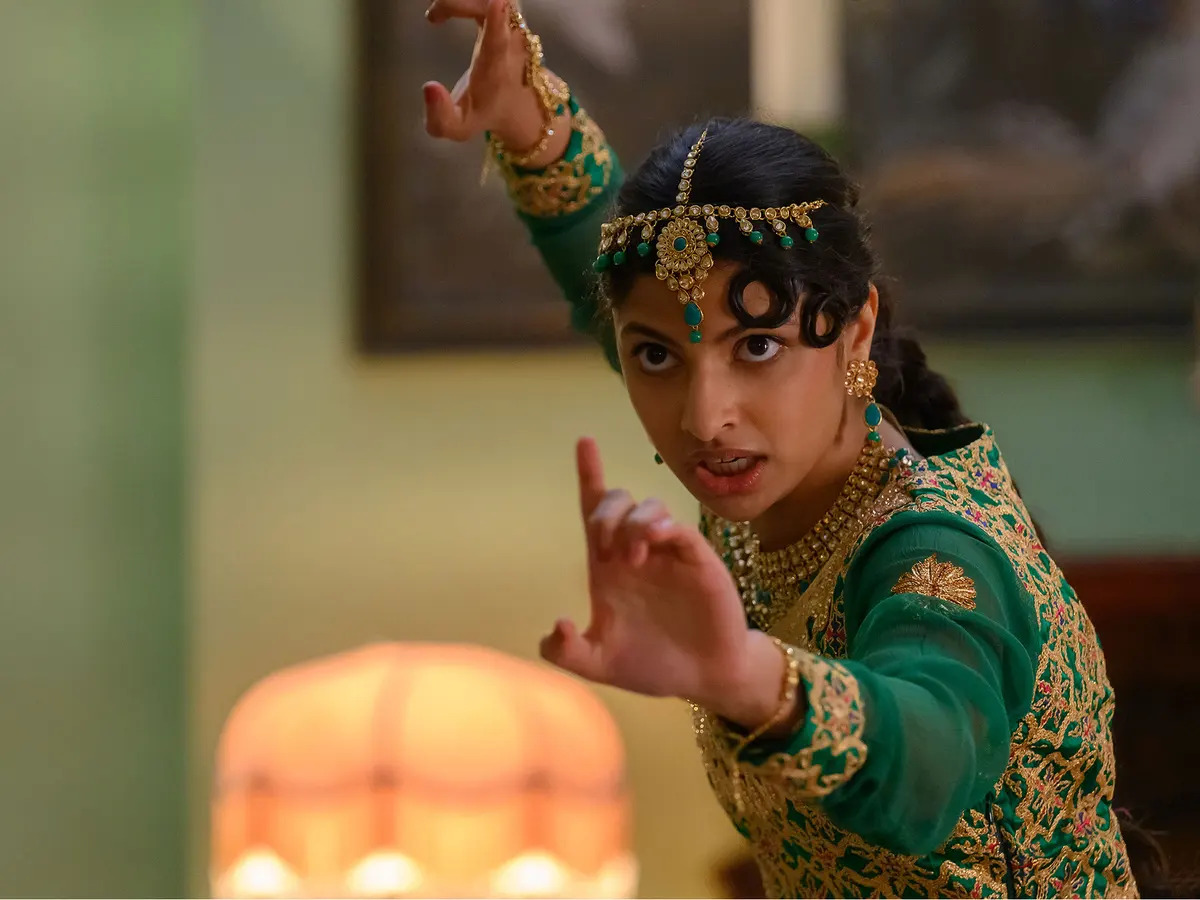The Haunted Mansion
Posted on December 2, 2003 at 11:27 am
D| Lowest Recommended Age: | Kindergarten - 3rd Grade |
| Profanity: | Mild |
| Nudity/ Sex: | None |
| Alcohol/ Drugs: | Social drinking |
| Violence/ Scariness: | Scary and spooky with creepy and grisly images, including murder, suicide, skeletons |
| Diversity Issues: | Issue of mixed marriages raised |
| Date Released to Theaters: | 2003 |
When Disney makes a movie based on a theme park ride, it is not about inspiration, it is about branding. Pirates of the Caribbean: Curse of the Black Pearl managed to be a delight — and a huge hit — but that’s because it had imagination and verve. Apparently, there was none left over.
This is an overstuffed and under-imagined attempt to turn a six-minute ride into a 90 minute picture. The plot is as thin as spider webs and is as predictable as a Scooby-Doo episode. The result is barely worth the price of a video rental, even from 99 cent bin.
Jim Evers (Eddie Murphy whose role as an eager-to-please realtor tests even his facile smile) and his lovely wife Sara (Marsha Thomason) spontaneously head out of town to celebrate their wedding anniversary and spend some time with the family. He has two kids, Megan (Aree Davis), the fearless and bossy big sister, and Michael (Marc John Jefferies) the timid and arachnophobic young son. Jim neglects his family for “it will only be 20 minutes” business meetings that turn into hours, and his wife and children are unhappy.
A mysterious caller requests that Sara be the agent for a mansion outside of town, and Jim insists on another one of his “just 20 minutes” stops to seal the deal. Of course, a storm rolls into the bayou and the family must stay overnight as a guest in the atmospheric household of Edward Gracey (Nathaniel Parker) and his spooky butler Ramsley (Terence Stamp). Once the doors slam shut, the family must solve the mystery of the mansion before they can leave together again.
The theme park ride moves quickly. Although the people in it race around, the the movie drags. While Jim’s spiel is a lighthearted patter complemented by his kids’ matter of fact acceptance of their surroundings, the resulting dialogue feels off-key and smarmy. Madame Leota (Jennifer Tilly) and the barbershop quartet of singing sculptures keep filler scenes from becoming too slow, but you have to wonder at a movie where disembodied heads turn in the movie’s most interesting performances. Thomason, as Mrs. Evers, shows little acting range beyond looking doe-eyed and bewildered at the ghost who has mistaken her for his long-ago love, while Terence Stamp’s place-holder of a performance as the disdainful Ramsley appears to tap the actor’s immense desire to be out of the movie.
Parents should know that there are lots of chases and peril involving ghosts and skeletons, and children are in danger. The atmospherics of the crypt scenes might scare younger viewers. A ghost is dragged into a fiery pit while other ghosts dematerialize to ascend into the heavens and there are many grisly and gross images, including a rotted corpse, that might upset sensitive viewers.
There is a brief shot of drawings on a tarot card with frontal nudity and Jim says the ghost wants to “get jiggy with” his wife. Jim steals a cigar and matches. A character is poisoned and another commits suicide by hanging. Younger children might be scared when the Evers parents, Jim and Sarah, are threatened. It is not addressed explicitly, but the tragic romance that led to the house being haunted was between a black woman and a white man, which was why it was so harshly viewed. One strength of the movie is the portrayal of a loving and committed relationship between Jim and Sarah. Jim may be distracted, but he is devoted to his wife and family.
Families should discuss priorities and how different people in the same family might view an action in a very different light. For example, Jim argues that he is trying to succeed in business so that his kids will have everything they want, whereas his kids argue that they really only want time with their parents. Families might also wish to discuss being scared and how Jim explains overcoming one’s fears to his son. Should he have told his son to “be a man?”
Families who enjoy Wallace Shawn’s performance as the super-cautious ghost man-servant, will appreciate his best role as a kidnapper in the classic The Princess Bride. “Haunted” houses with plenty of eccentric characters appear in The Addams Family and Beetlejuice and classics The Cat and the Canary and The Ghost and Mr. Chicken.






